Prices in AUD. Shipping worldwide. Flat rate $8 postage per order within Australia. International by weight calculated at checkout. Read full terms.
-
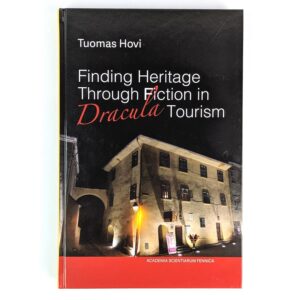
Finding Heritage Through Fiction in Dracula Tourism
AU$65.00 Read MoreAdd to cartToumas Hovi
Helskinki: Suomalainen Tiedeakatemia, 2016.Heritage and tourism have become inextricably linked. Depending on the view point, the effect of this link can be seen either negative or positive. Does tourism produce inauthentic and falsified tradition, threatening cultural heritage? Or does it, in fact, help to preserve heritage, culture and folklore in a changing and globalizing world? Tuomas Hovi investigates heritage in the context of Dracula tourism in Romania: tourists visiting places connected with either the fictional vampire Dracula or the historical Dracula, Vlad the Impaler, a 15th century Romanian ruler. How is Romanian heritage and culture presented and promoted through a seemingly superficial Dracula tourism based on Western popular fiction in Dracula tourism? Finding Heritage Through Fiction in Dracula Tourism offers new perspectives on the research literate concerning tourism and heritage, and a folkloristic view of tourism research. FF Communications No. 311 published by the Finnish Academy of Science and Letters.
-
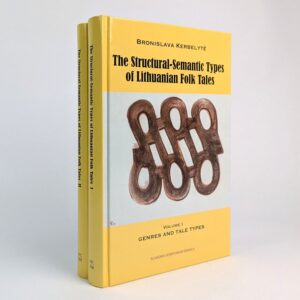
The Structural-Semantic Types of Lithuanian Folk Tales (2 Volumes)
AU$150.00 Read MoreAdd to cartBronislava Kerbelyte
Helskinki: Suomalainen Tiedeakatemia, 2015.I: Genres and Tale Types. II: The Classification and Index of Elementary Plots and Their Types. The classification system of the types of folk tales published by Antti Aarne in 1910 was a much needed and courageous project. Bronislava Kerbelyte has classified more than 40,000 variants of Lithuanian folk tales according to the international catalogue by Antti Aarne and Stith Thompson (AT). She has concluded that it is necessary to improve the classification system. Kerbelyte has determined elementary plots (EP) as structural elements for narratives and created the structural-semantic method for analysis and description of texts on several levels. The classification of elementary plots and their types contains much information about folk tales and about people. FF Communications No. 308 & 309 published by the Finnish Academy of Science and Letters.
-
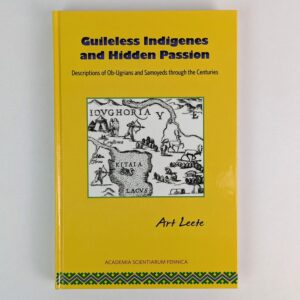
Guileless Indigenes and Hidden Passion: Descriptions of Ob-Ugrians and Smoyeds through the Centuries
AU$80.00 Read MoreAdd to cartArt Leete
Helskinki: Suomalainen Tiedeakatemia, 2014.This monograph is aimed for discussing the views of the character of the Khanty, Mansi and Nenets by authors of different periods. Changes of general ideas about the inhabitants of the Arctic has had a remarkable, albeit often concealed, role in the development of the research on northern peoples. The author examines the image of northern peoples beginning from ancient Greek and Roman accounts of peoples, medieval sources, modern travel journals and ends up with the analyses of contemporary scholarly writings. The book is an attempt to explore the general background of ideas and the scientific methodology that frames changes in this knowledge about the peoples of the North. The theoretical framework of this monograph is related to the dialogue between modern theories of identity and the historical modes of description. FF Communications No. 306 published by the Finnish Academy of Science and Letters.
-
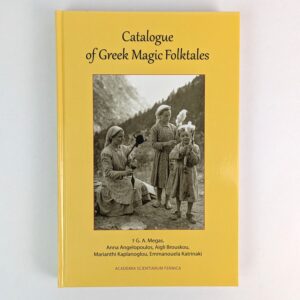
Catalogue of Greek Magic Folktales
AU$80.00 Read MoreAdd to cartG. A. Megas; Anna Angelopoulos; Aigli Brouskou; Marianthi Kaplanoglou; Emmanouela Katrinaki
Helskinki: Suomalainen Tiedeakatemia, 2012.The collected texts cover a period of more than a century of recordings (from the second half of the nineteenth century up to the mid-1970s) and geographically cover not only the entire Greek territory and Cyprus but also other areas where Greek populations live(d) and Greek cultures thrive(d) (Asia Minor, Pontus, Cappadocia, Southern Italy). Georgios A. Megas drafted the first catalogue, gathering and indexing all published and unpublished Greek folktale versions, so that the number of texts finally exceeded 23 000. A group of specialists continued for nearly 30 years carrying this project, consulting, classifying, and commenting G. Megas’ handwritten card indexes, and finally editing this rich material, scattered in public and private archives. FF Communications No. 303 published by the Finnish Academy of Science and Letters.
-
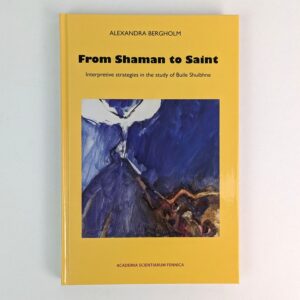
From Shaman to Saint: Interpretive Strategies in the Study of Buile Shuibhne
AU$60.00 Read MoreAdd to cartAlexandra Bergholm
Helskinki: Suomalainen Tiedeakatemia, 2012.This study charts the ways in which Buile Shuibhne has been interpreted in twentieth-century scholarship, by paying particular attention to the religious allegorical readings of the text. This examination of four prevalent interpretative frameworks ‒ historical, pre-Christian, and anthropological ‒ relates theoretical conceptions of literary theory, comparative religion and historiography to the study of medieval narrative material, by considering the nature of different methodological presuppositions that have guided the scholars’ understanding of the tale’s meaning. The integration of issues relating to text, context, and interpretation raises the issue of communally shared reading strategies in the explication of interpretive variety, thereby highlighting the importance of asking not only what a text means, but also how it means. FF Communications No. 302 published by the Finnish Academy of Science and Letters.
-
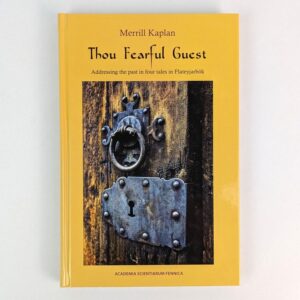
Thou Fearful Guest: Addressing the Past in Four Tales in Flateyjarbok
AU$70.00 Read MoreAdd to cartMerrill Kaplan
Helskinki: Suomalainen Tiedeakatemia, 2011.A stranger appears at the court of a Norwegian king known best for bringing Christianity to the North. Variations of this scene appear four times in the fourteenth-century manuscript Flateyjarbok. Thou Fearful Guest analyzes how these episodes create meaning by their connections to custom, law, myth, discourses of historical and spiritual truth, typological understandings of time, and the historical context of the manuscript in which they appear. Thou Fearful Guest explores how and to what end medieval Icelanders thought about tales of heathen gods and heroes. FF Communications No. 301 published by the Finnish Academy of Science and Letters.
-
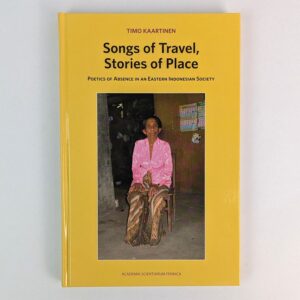
Songs of Travel, Stories of Place: Poetics of Absence in an Eastern Indonesian Society
AU$50.00 Read MoreAdd to cartTimo Kaartinen
Helskinki: Suomalainen Tiedeakatemia, 2010.This book explores the narratives of people who trace their origin to Banda, the famous Nutmeg Islands of Eastern Indonesia. They were displaced from their ancient homeland by the Dutch colonization of Banda in 1621 and carry on their language and traditions in the village described in this study. The Bandanese continue travelling to distant places in pursuit of recognition by their ancestral allies. They bring their past into life through rituals and verbal arts which commemorate absent travelers and anticipate their return. This book argues that ethno-history can be a source of exemplary acts which inform collective responses to new circumstances. The folk poetry of the Bandanese places real, historical events in several chronotopic frameworks in which they are relived as memory and given a total meaning as history. FF Communications No. 299 published by the Finnish Academy of Science and Letters.
-
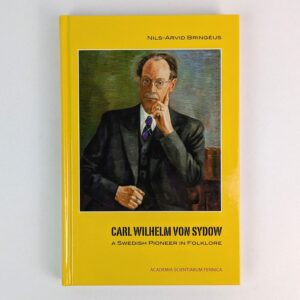
Carl Wilhelm von Sydow: A Swedish Pioneer in Folklore
AU$60.00 Read MoreAdd to cartNils-Arvid Bringeus
Helskinki: Suomalainen Tiedeakatemia, 2009.Nils-Arvid Bringeus provides a detailed analysis of the founder of folklore research in Sweden, Professor Carl Wilhelm von Sydow (1878-1952). We are introduced to a fascinating personality and able to follow his persevering struggle to gain acceptance for a new academic discipline. Von Sydow took a highly active interest in international cooperation, not least within the field of folktale research. He taught at both Lund and Uppsala universities, establishing a taxonomy within the study of folklore that has been of great importance. FF Communications No. 298 published by the Finnish Academy of Science and Letters.
-
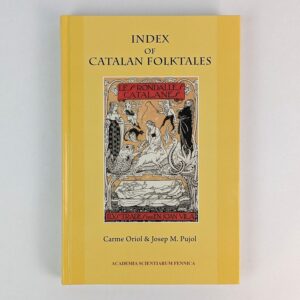
Index of Catalan Folktales
AU$70.00 Read MoreAdd to cartCarme Oriol; Josep M. Pujol
Helskinki: Suomalainen Tiedeakatemia, 2008.The Catalan language is spoken over a large area divided among four states (Andorra, Spain, France and Italy), with a total population of 13.5 million inhabitants. Catalan culture has a large body of literature as well as a rich and extensive tradition of folklore studies. Catalan folktales were ignored by the Types of the Folktale until the second edition (1961), which included only references to the collection published by Joan Amades (1950). The present Index of Catalan Folktales brings together the work of some seventy collectors working along 150 years and for the first time gives a faithful and complete image of the Catalan contribution to the world´s folklore heritage. FF Communications No. 294 published by the Finnish Academy of Science and Letters.
-
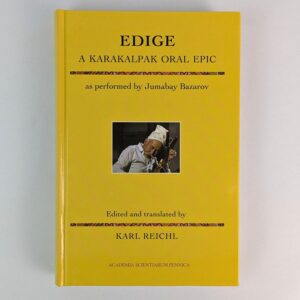
Edige: A Karakalpak Oral Epic as performed by Jumabay Bazarov
AU$80.00 Read MoreAdd to cartKarl Reichl
Helskinki: Suomalainen Tiedeakatemia, 2007.Edige is one of the most esteemed oral epics of the Karakalpaks, a Turkic-speaking people, who live on the mouth of the Amu Darya and the shores of the Aral Sea. Edige is a historical personage from the time of Timur at the turn of the 14th to the 15th century. The singer, Jumabay Bazarov, was the last Karakalpak singer of heroic epics who stood in an entirely oral tradition. In this edition and translation an attempt has been made to capture as much of his oral performance as possible, including the singer’s dialect features and his musical style. FF Communications No. 289 published by the Finnish Academy of Science and Letters.
-
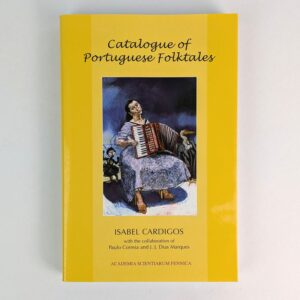
Catalogue of Portuguese Folktales
AU$60.00 Read MoreAdd to cartIsabel Cardigos; Paul Correia; J. J. Dias Marques
Helskinki: Suomalainen Tiedeakatemia, 2006.In the old Aarne / Thompson, Portugal was virtually non-existent, appearing in the bibliography of just three folktales. In 2003, the author of The Types of International Folktales stretched his hand to the first manuscript of the Catalogue of Portuguese Folktales and included them in 700 types of his own manuscript. The Catalogue of Portuguese Folktales is now the first regional index that takes into account the classifications of the new ‘ATU’. But it displays its difference by electing its own affinities with old ‘AT’ numbers, with regional catalogues, or even by offering new numbers. We can see a new face of the European folktale emerging, with a strong Mediterranean flavour. FF Communications No. 291 published by the Finnish Academy of Science and Letters.
-
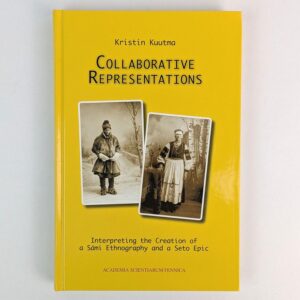
Collaborative Representations: Interpreting the Creation of a Sami Ethnography and a Seto Epic
AU$60.00 Read MoreAdd to cartKristin Kuutama
Helskinki: Suomalainen Tiedeakatemia, 2006.The focus of this book revolves around two manifestly representative texts from the early twentieth century: Johan Turi’s story of Sami experience Muitalus samiid birra and the Seto epic Peko performed by Anne Vabarna. The current analysis of the complex performative interaction between the culture bearer, his or her repertoire, and the culture researcher benefits from an interdisciplinary anthropological and folkloristic approach, informed by hybridity and the blurring of disciplinary boundaries in historicizing inquiries into cultural documentation and textual practices. FF Communications No. 289 published by the Finnish Academy of Science and Letters.
-
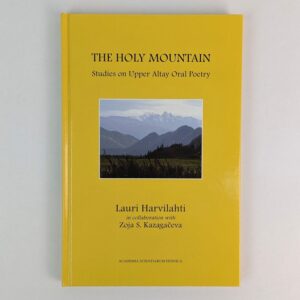
The Holy Mountain: Studies on Upper Altay Oral Poetry
AU$40.00 Read MoreAdd to cartLauri Harvilahti; Zoja S. Kazagaceva
Helskinki: Suomalainen Tiedeakatemia, 2003.The aim of this study is to achieve a synthesis in forming a new overall view of the stylistic-poetic and structural devices used to produce the archaic mythical and epic cultural tradition of the Upper Altay region. Attention is also being paid to the inherent ethnic nature of the Altaian ethnic groups, to cultural influences and to some extent their present cultural identity. FF Communications No. 282 published by the Finnish Academy of Science and Letters.
-
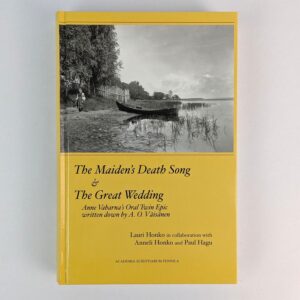
The Maiden’s Death Song & The Great Wedding: Anne Vabarna’s Oral Twin Epic written down by A. O. Vaisanen
AU$80.00 Read MoreAdd to cartLauri Honko; Anneli Honko; Paul Hagu
Helskinki: Suomalainen Tiedeakatemia, 2003.For centuries, the eastern shores of the Baltic Sea have nourished poetic cultures developing oral epic traditions that mostly survived in lays of a few hundred lines but that eventually gave rise to much longer traditional epics. The Maiden’s Death Song & The Great Wedding is a manifestation of a long epic format rare in Baltic-Finnish folk poetry and of two alternative storylines. It is also a masterpiece that serves as a reminder of the poetry of a gifted minority culture that tends to be forgotten. FF Communications No. 281 published by the Finnish Academy of Science and Letters.
-
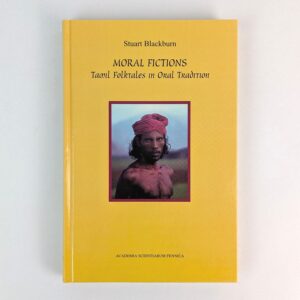
Moral Fictions: Tamil Folktales in Oral Tradition
AU$80.00 Read MoreAdd to cartStuart Blackburn
Helskinki: Suomalainen Tiedeakatemia, 2001.Is fantasy the defining element in fairy tales? This question is the starting point for Stuart Blackburn’s study of Tamil oral tales. Having collected over 300 tales, 100 of which are translated in this book, he concludes that although fantasy, and humour, are present, at the core of the tales lies a moral vision in which wrongdoing, especially physical cruelty, is punished. Only the second full-length study of Indian tales from oral tradition, this book places the Tamil tradition in an international context, describes the telling sessions and includes tellers’ interpretations of some tales. FF Communications No. 278 published by the Finnish Academy of Science and Letters.
-
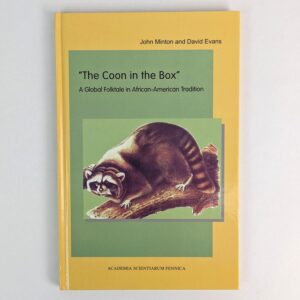
The Coon in the Box: A Global Folktale in African-American Tradition
AU$50.00 Read MoreAdd to cartJohn Minton; David Evans
Helskinki: Suomalainen Tiedeakatemia, 2001.Among the most popular of all African-American folktales is the story folklorists know as The Coon in the Box, itself a derivative of the extremely old and widespread narrative usually identified, after Brothers Grimm, as Doctor Know-All (Doktor Allwissend) (AaTh 1641). Not coincidentally, this item has served as a centerpiece in the debate over the sources of New World black folktales. A detailed analysis of The Coon in the Box, its life history and cultural context thus reveals a great deal not only of the nature of African-American oral narratives in and of themselves, but also of the challenges confronting scholars in investigating the origins, diffusion, and development of these traditions. FF Communications No. 277 published by the Finnish Academy of Science and Letters.
-
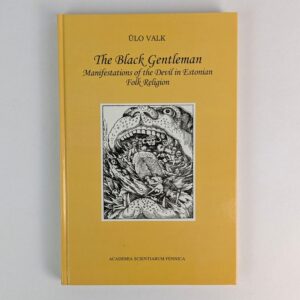
The Black Gentleman: Manifestations of the Devil in Estonian Folk Religion
AU$50.00 Read MoreAdd to cartUlo Valk
Helskinki: Suomalainen Tiedeakatemia, 2000.This empirical study of the Devil in the collections of the Estonian Folklore Archives, reflecting the world of belief inhabited by the Estonians in the 19th and 20th centuries, is also a book about suspicion and fear in everyday life. It describes how religious folklore has drawn borders between the human and the non-human, how it has modelled the Other, the supernatural and social evil. As a study of folk narrative, and legends in particular, it mainly discusses variation at the level of motif with special reference to the visual guises of the Devil. FF Communications No. 276 published by the Finnish Academy of Science and Letters.
-
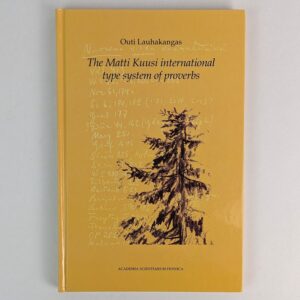
The Matti Kuusi International Type System of Proverbs
AU$40.00 Read MoreAdd to cartOuti Lauhakangas
Helskinki: Suomalainen Tiedeakatemia, 2000.From 1965 to 1974 Matti Kuusi was editor-in-chief of the famous journal Proverbium and invited proverb scholars to contribute to this forum. During this period he began to keep a card index of literature references to proverb types and made his first experiment in the thematic classification of international proverb materials in the 1970s. This volume is a study of the development of this type system. Outi Lauhakangas attempts to show how her father’s practical dream of a common international reference code came to be realised. The reader will find a list of some 700 global or almost global proverb motifs and can access the database via the website of The Finnish Literature Society. FF Communications No. 275 published by the Finnish Academy of Science and Letters.
-
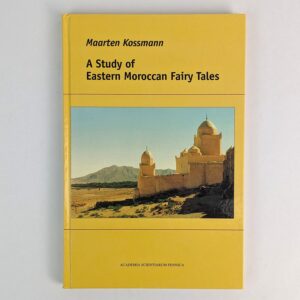
A Study of Eastern Moroccan Fairy Tales
AU$40.00 Read MoreAdd to cartMaarten Kossmann
Helskinki: Suomalainen Tiedeakatemia, 2000.This book studies the structure and style of orally transmitted fairy tales from Eastern Morocco in Berber and dialectal Arabic. Drawing on materials collected in his own fieldwork and other sources, the author pays special attention to the aesthetics of the fairy tale as understood by Max Lüthi and to the analysis of tale-specific formulae. Two hitherto unpublished Figuig Berber fairy tales are appended, as is a comparison of two versions of an Eastern Riffian story which, though collected independently at an interval of 60 years, show remarkable similarities. FF Communications No. 274 published by the Finnish Academy of Science and Letters.
-
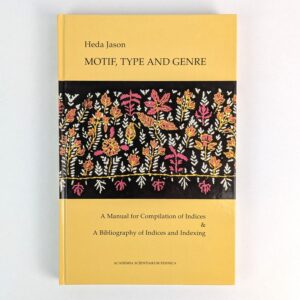
Motif, Type and Genre: A Manual for Compilation of Indices & A Bibliography of Indices and Indexing
AU$60.00 Read MoreAdd to cartHeda Jason
Helskinki: Suomalainen Tiedeakatemia, 2000.The present manual describes in detail methods and procedures for classifying (indexing/typing) folk literature. It has been prepared by an ethnopoetician at the suggestion of colleagues engaged in philological-historical research and is written on the basis of the author’s experience in both compiling indices for oral folk literature and using indices compiled by others. The Manual describes concepts, methods and working techniques. Three kinds of indices are described: indices for literary motifs, indices for tale types of oral and folk literatures and indices for ethnopoetic genres. FF Communications No. 273 published by the Finnish Academy of Science and Letters.
